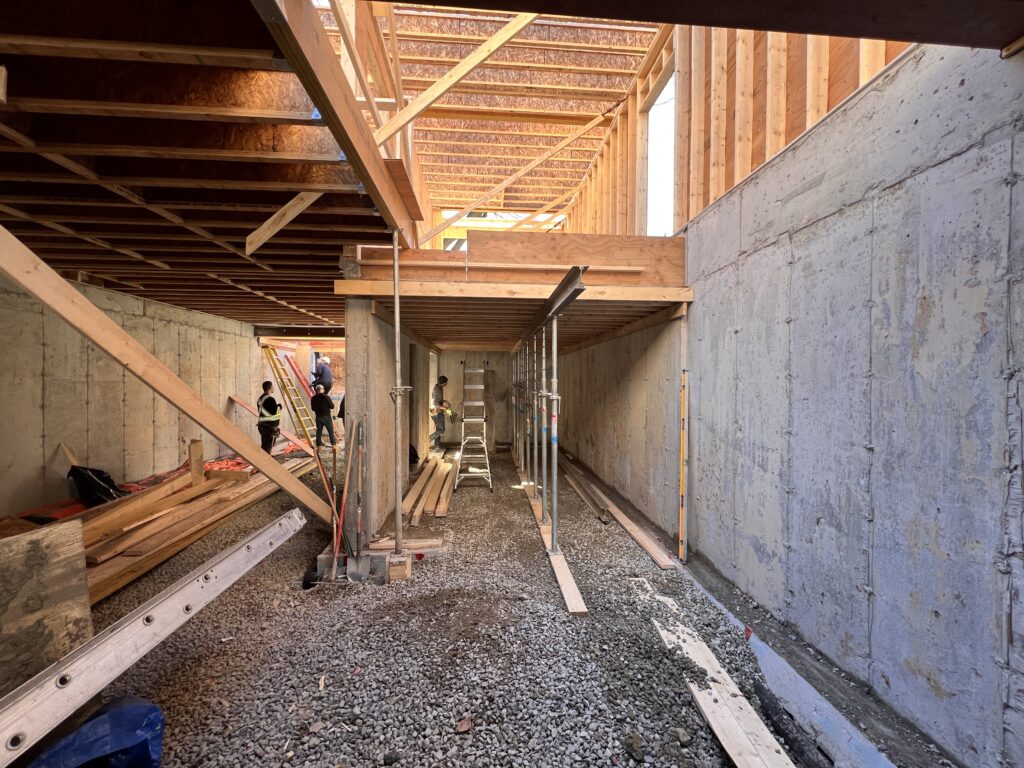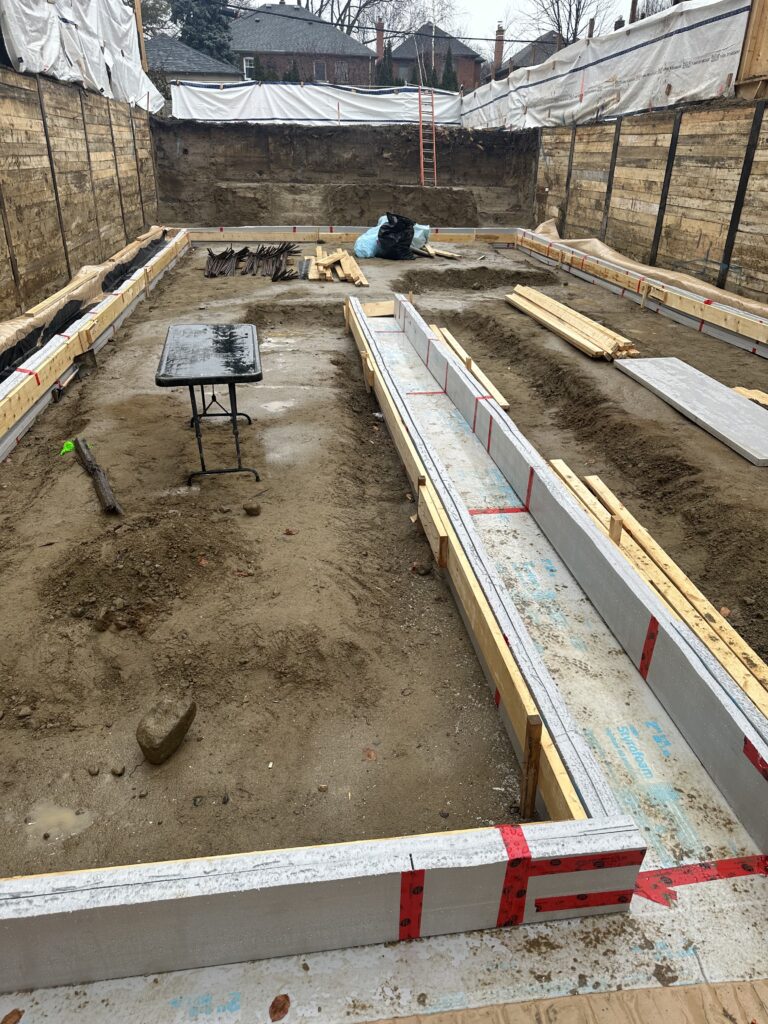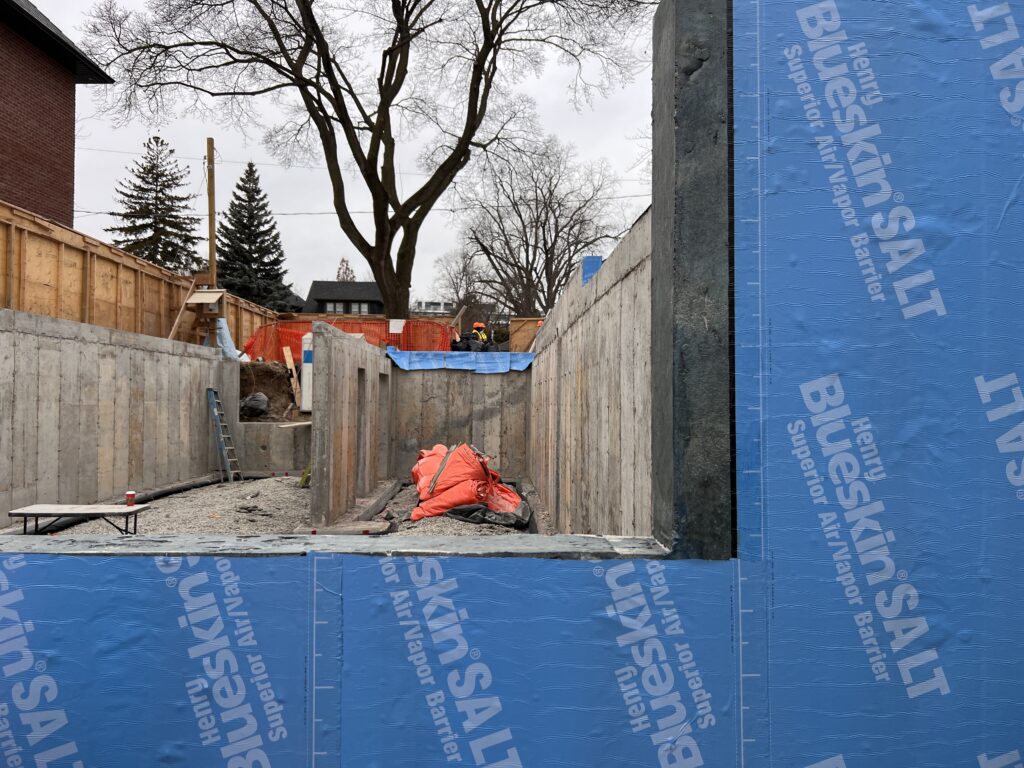With permits secured and working drawings finalized, the existing 1960s house was demolished, followed by careful site shoring, excavation, and groundwork. Throughout the initial sitework, the project team kept neighbours informed and ensured dust was effectively controlled and promptly cleaned.

Site shoring was required due to the proximity of the property lines and neighbouring structures. We worked closely with the shoring engineer, shoring contractor, and general contractor to develop a shoring design that maintained site safety during foundation construction while minimizing potential impacts on adjacent properties.
The footings were formed with continuous, uninterrupted insulation to support the project’s long-term thermal performance goals. The foundation walls were poured with precision and carefully detailed to accommodate future structural members.


A central focus of the project was reducing embodied carbon and material waste through sustainable structural choices. Engineered wood was prioritized over conventional steel wherever feasible, and heavy concrete was replaced with lighter, more efficient assemblies to lower the project’s environmental impact (see more in the previous chapter). Instead of relying on concrete-bearing supports, structural metal brackets were used to carry the weight of the brick veneer cladding, streamlining construction and further reducing material consumption. This approach reflects our commitment to integrating sustainable design across Toronto, all while delivering a thoughtful solution that balanced structural efficiency with enduring aesthetic quality.
Throughout this phase, collaboration with both structural and geotechnical engineers was essential. We held weekly on-site meetings to ensure that unforeseen challenges, such as silty-sand soil conditions and groundwater drainage strategies, were identified and resolved early. Left unaddressed, these conditions can compromise the structural integrity of the house, underscoring the importance of applying the proper means and methods to the problem at hand. Subtrades approached the work with skill and care, particularly the framing crew, whose precision established the foundation for everything that followed.

